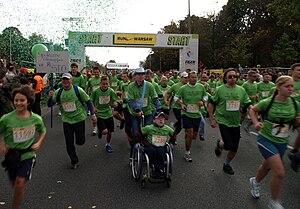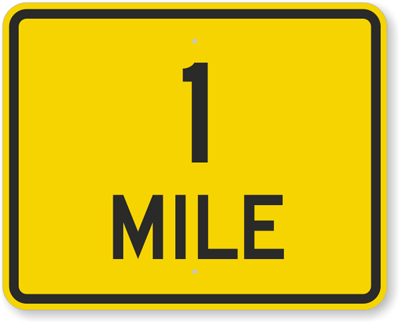Okay, so you like to run, or you just want a fun new exercise program and you’re ready to get started running but you’re not sure how? One of the best ways to get started running is to sit down and plan it out. What do you want to accomplish and how will you get the job done? There are many running programs available online. However, you have your own goals and needs; why not create your own running program? Here’s how:
| (Photo credit: Wikipedia) |
Why are you running and what do you hope to achieve? Are you running to lose weight? Are you planning to run a 5-K or other race? This is the first thing to write down before you start creating your running program. Everything else you do from this point on will support your goals and motivation.
Step Two: How Much Do You Have to Put In?
In this step you’re looking at the tangibles. How much time do you have each day? How far can you run in that time? When will you run? Start writing down the details. In the next step you’ll begin to pull them all together.
Step Three: Do the Math
Grab your calculator for this step. At this point you probably have a lot of information but no real plan. Now you’re going to start pulling it all together to accomplish your goals. This step is best explained with an example.
Sue is running to lose weight. She wants to lose 1 pound a week. She can run three times a week and she has 45-60 minutes to get the job done. Now it’s time for the math. Sue knows that a pound is 3500 calories. She also knows that by walking fast and running for an hour she’ll burn about 500 calories. If she runs three times a week she’ll burn 1500 calories. In order to lose a pound a week, she’d need to run seven times a week for an hour. This doesn't seem doable, so Sue knows she needs to cut her calories a bit more. This information gives her power. She can now plan her week and her weight loss.
Here’s another example, Joe wants to run a 5K. That’s 3.1 miles. He has signed up for the race and it is two months away. Joe can run every day for thirty minutes. At ten minutes a mile that’s enough time to get three miles in each day. However, Joe is new to running so he will be walking and running for the first few weeks until he can run the full distance. Joe gives himself a month to reach that goal.
| (Photo credits: www.mysecuritysign.com) |
Start with your goal. Add what you know and need to work with then do the math to see what is possible. It is important to your health and safety that you take it slow. If you’re new to running give yourself time. Pushing too hard and doing too much right away is a sure way to get injured and sick, which could derail your progress and defeat the purpose.
So what about staying motivated to reach your goals? Check back Thursday, as we'll talk about this next....



No comments:
Post a Comment